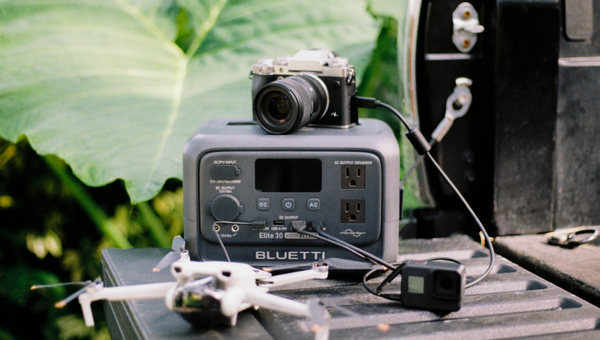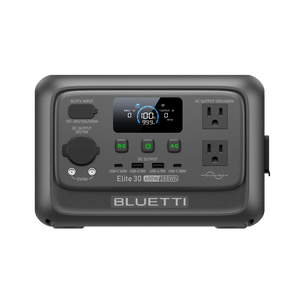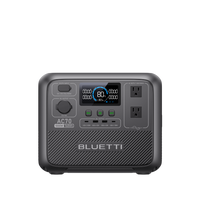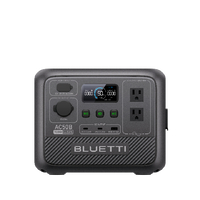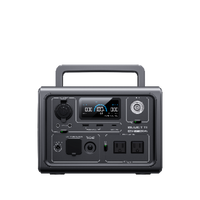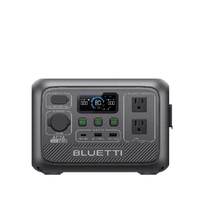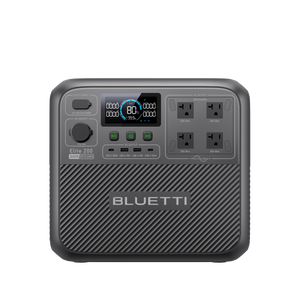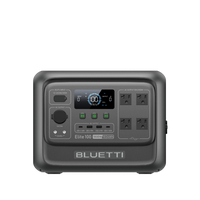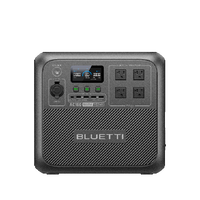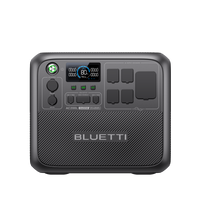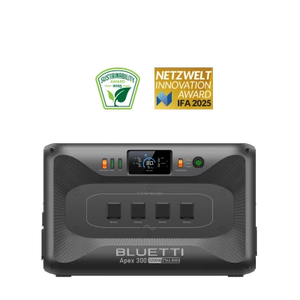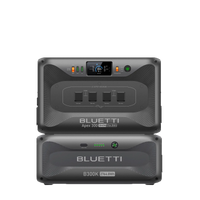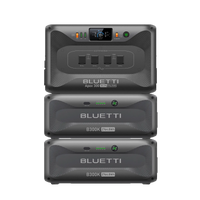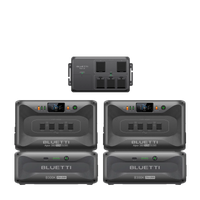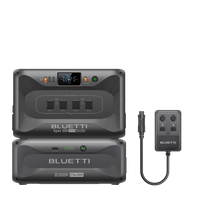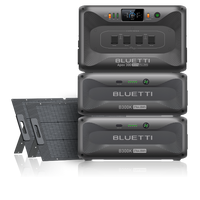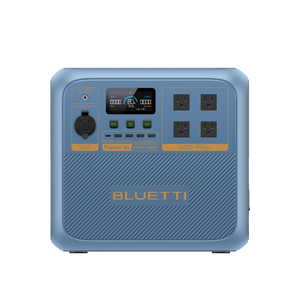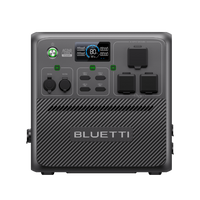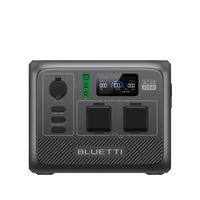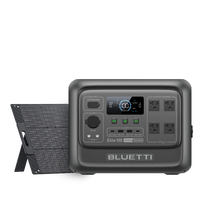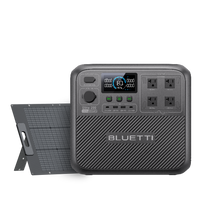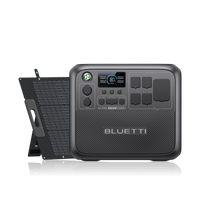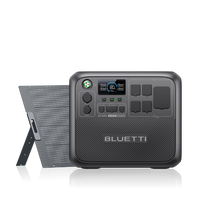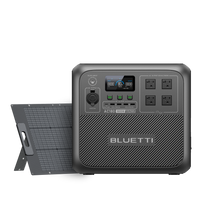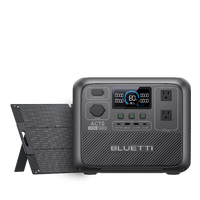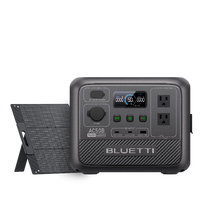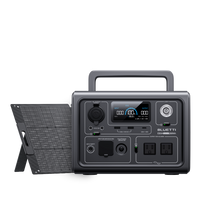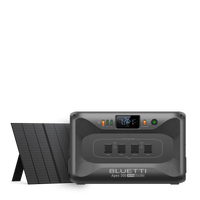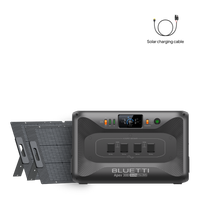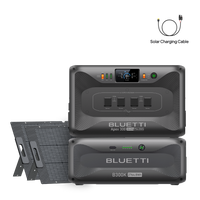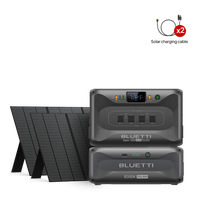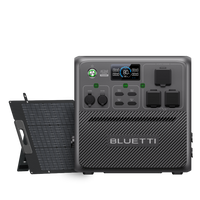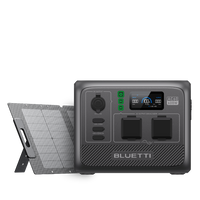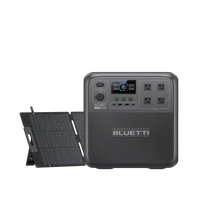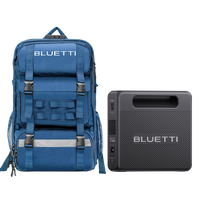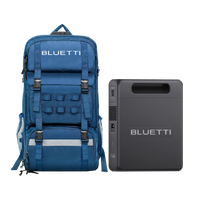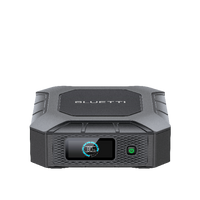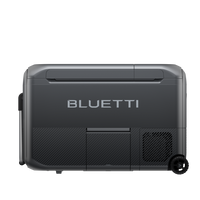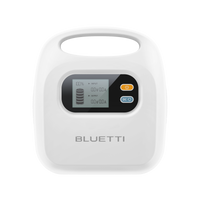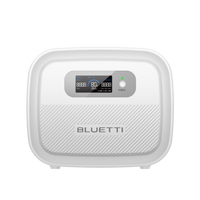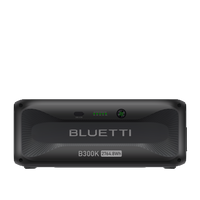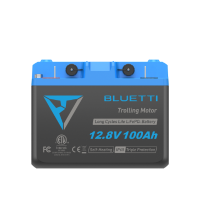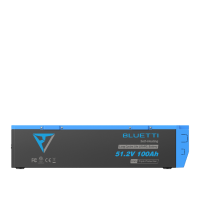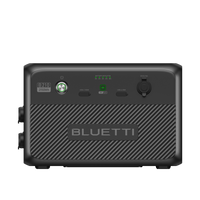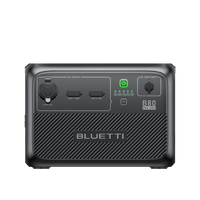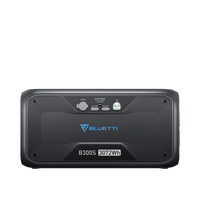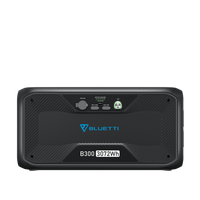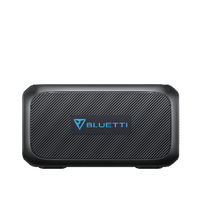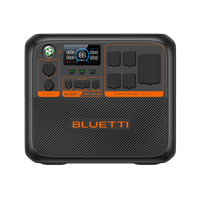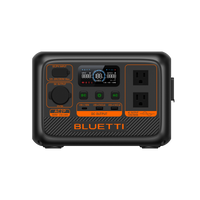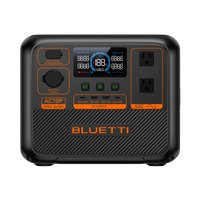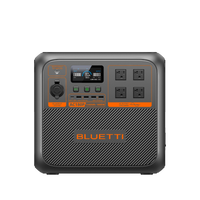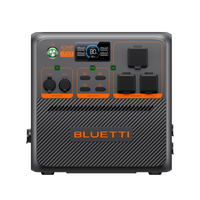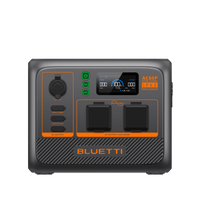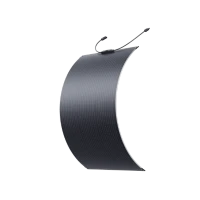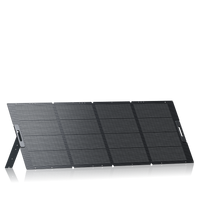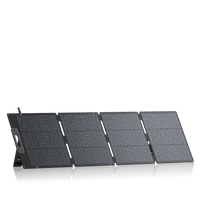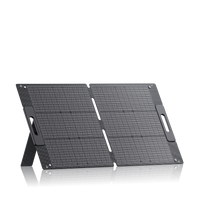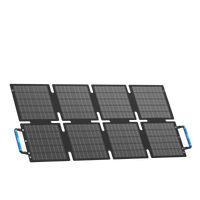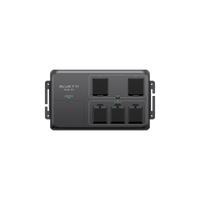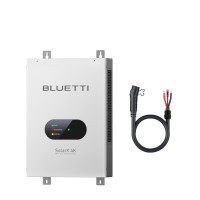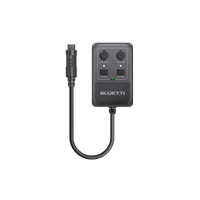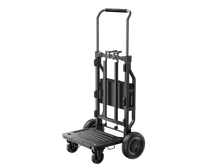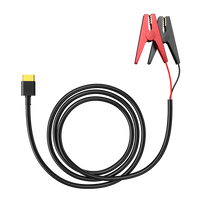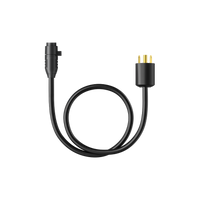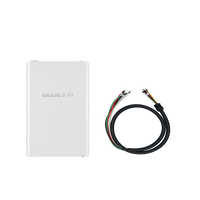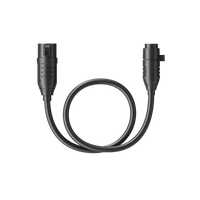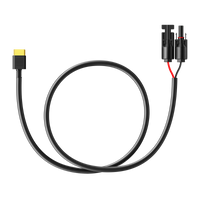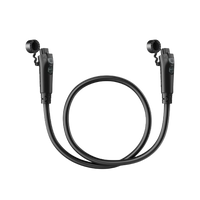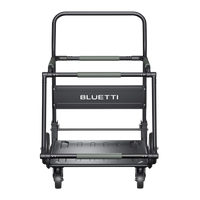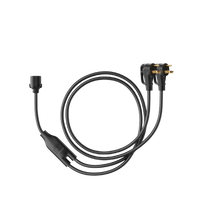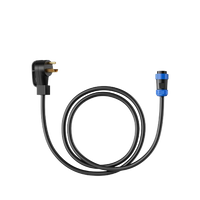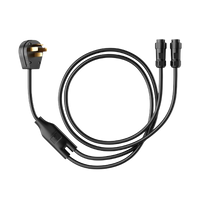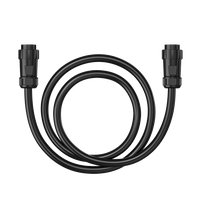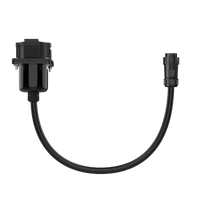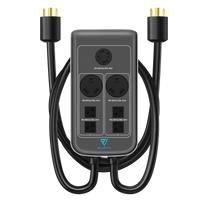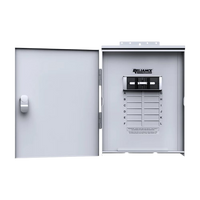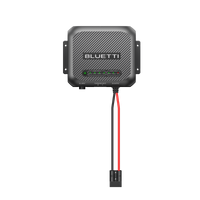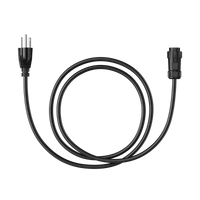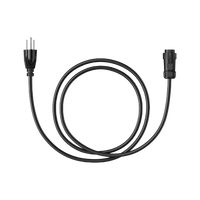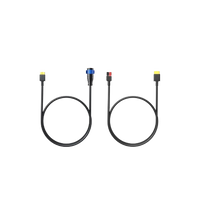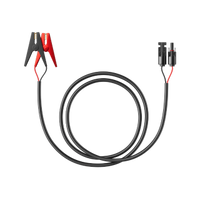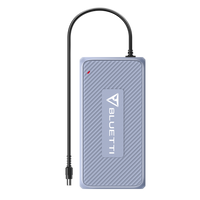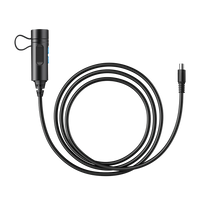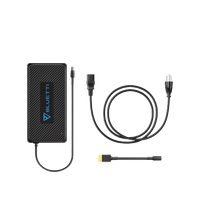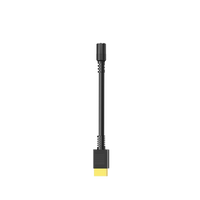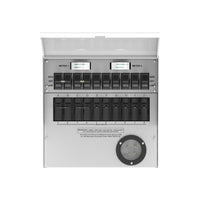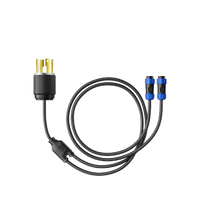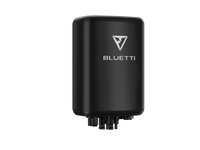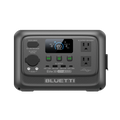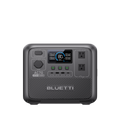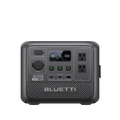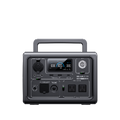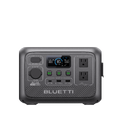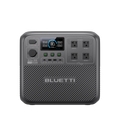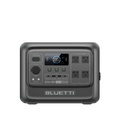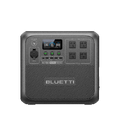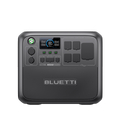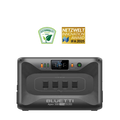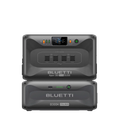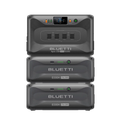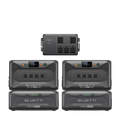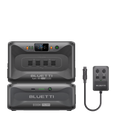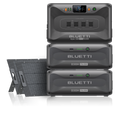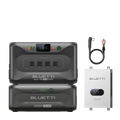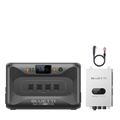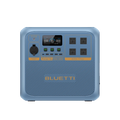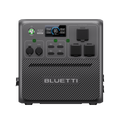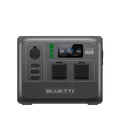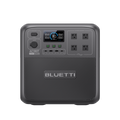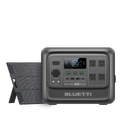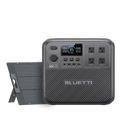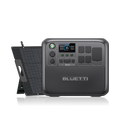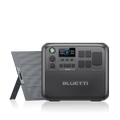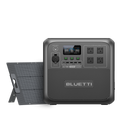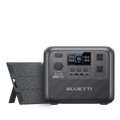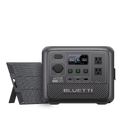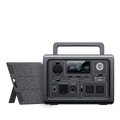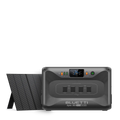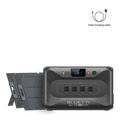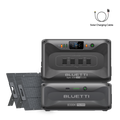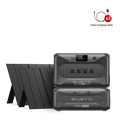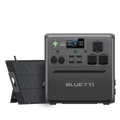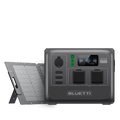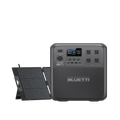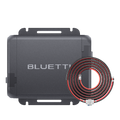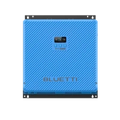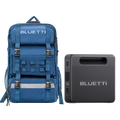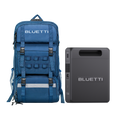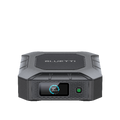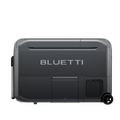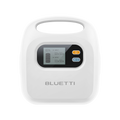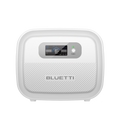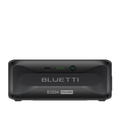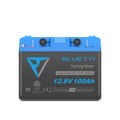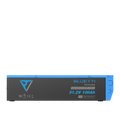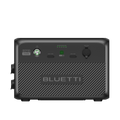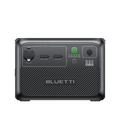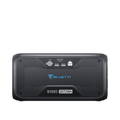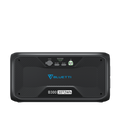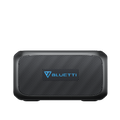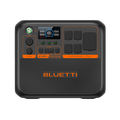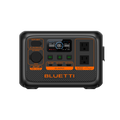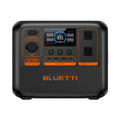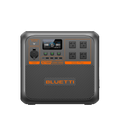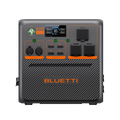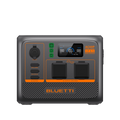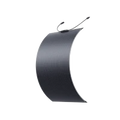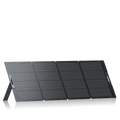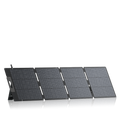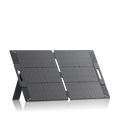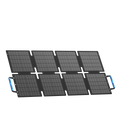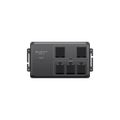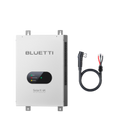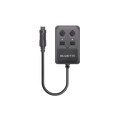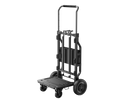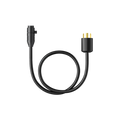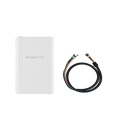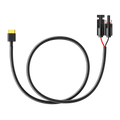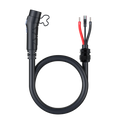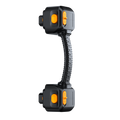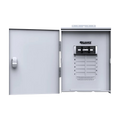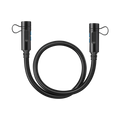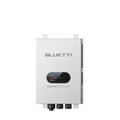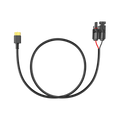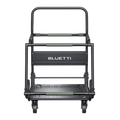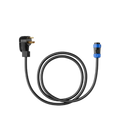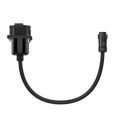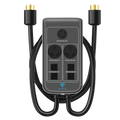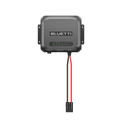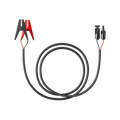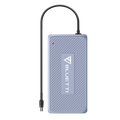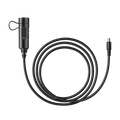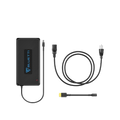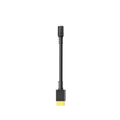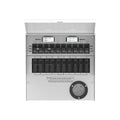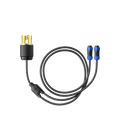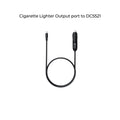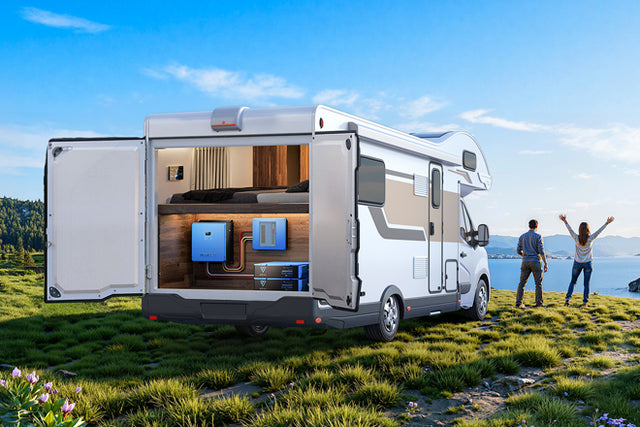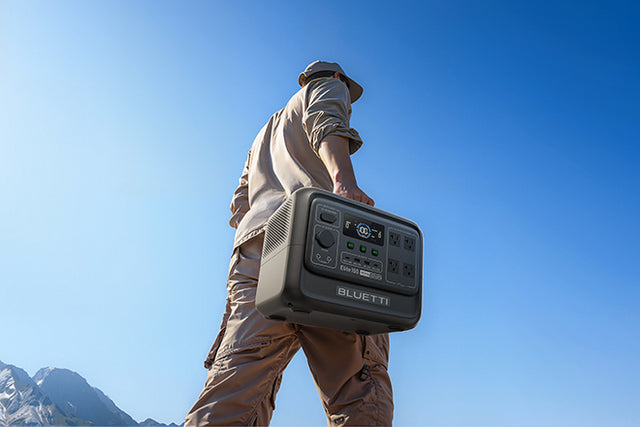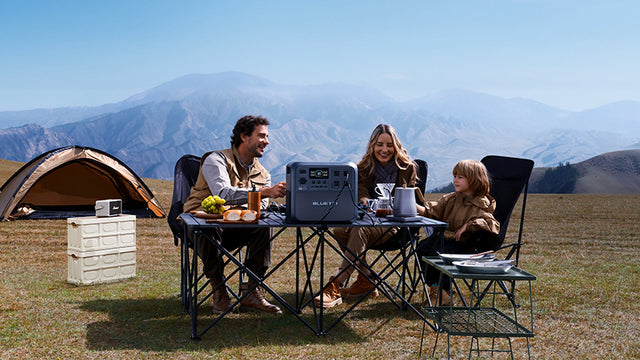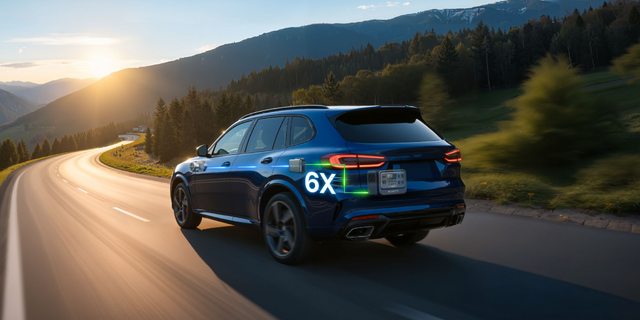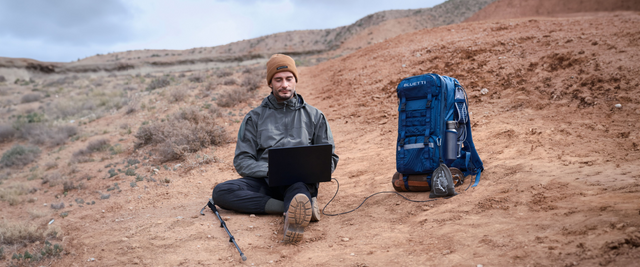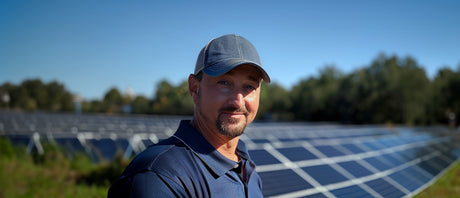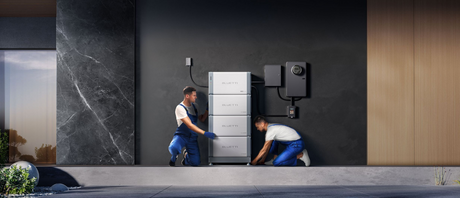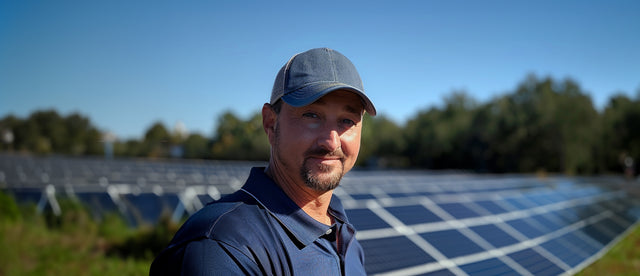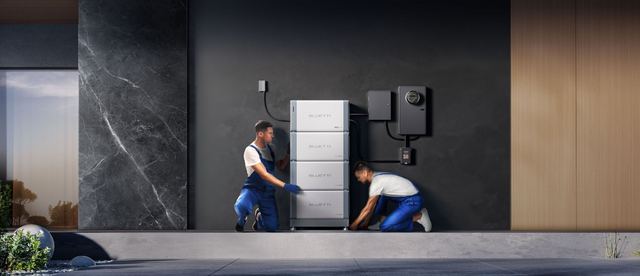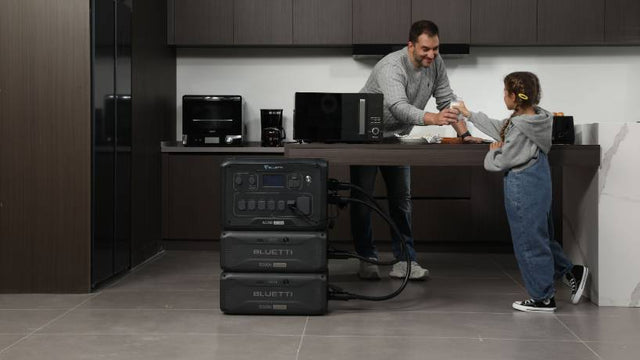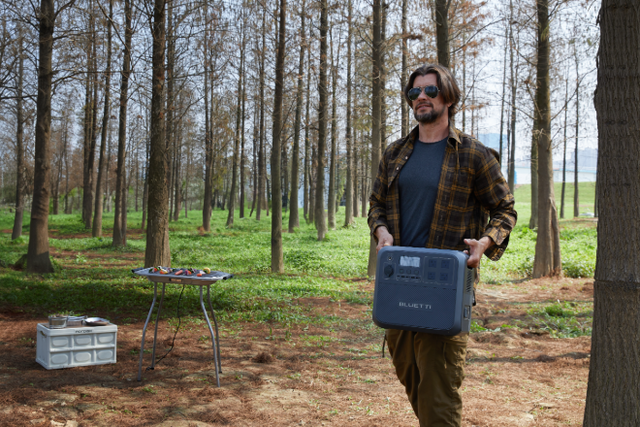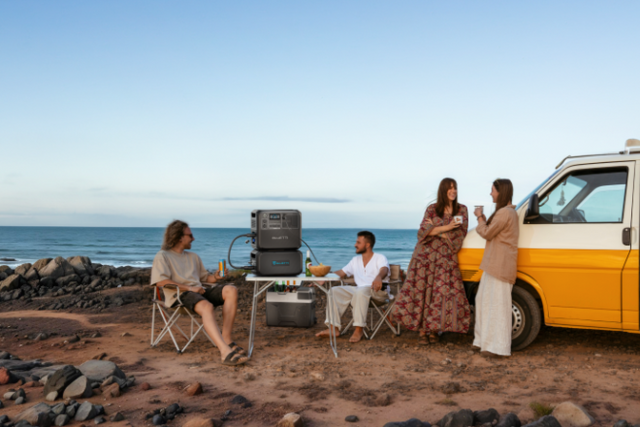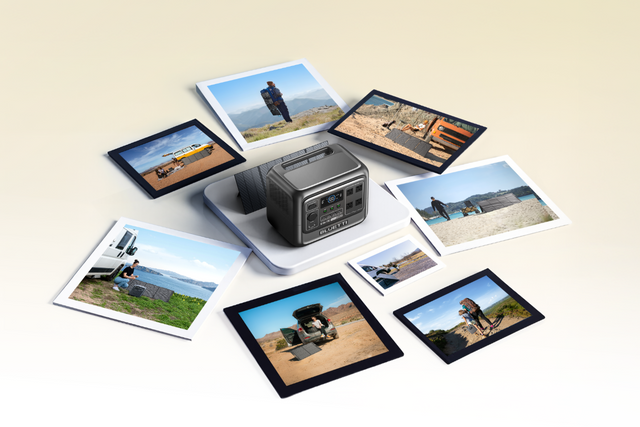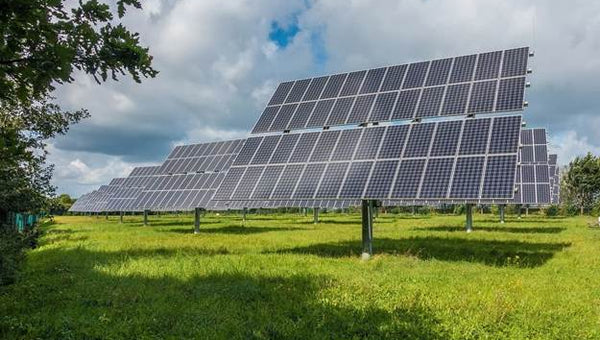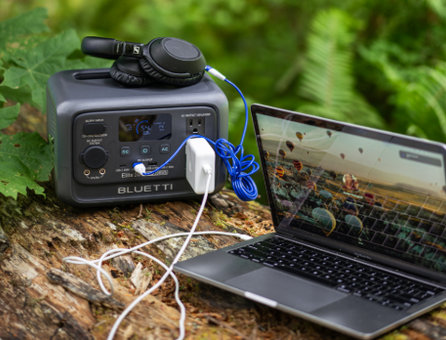Your cart is empty
Shop our productsLaptops have become essential in our daily lives, whether for work, streaming shows, or browsing social media. However, their batteries often fail at the most inconvenient times—like during a long flight, a power outage, or in a cozy coffee shop without available outlets. That's where a laptop power bank comes in handy.
But don't just grab the chunkiest option you spot online and hope for the best. There's more to it, like capacity, wattage, and how you use your laptop. In this post, we'll share what actually matters. The types of power banks out there, what you need to check before buying, and how to size one up. We'll also share some solid picks and a few tricks to stretch every bit of juice from the power bank.

What Is a Power Bank?
A power bank is a compact, portable, rechargeable battery. It stashes energy and lets you charge your appliances like smartphones, laptops, etc, when you're out and about, particularly away from an outlet. You charge it up in advance, then use it like a backup fuel tank to power your gadgets on the go. Now, if we're talking about a laptop power bank, you want to pay attention to a couple of things, such as:
-
Capacity (mAh or Wh): Capacity's a big one. For laptops, you need something beefy. Like at least 10,000 mAh (more like 20,000 mAh or 30,000 mAh (40-150Wh) if you don't want to charge it every five minutes). Just keep in mind, airlines get twitchy about anything over 100 watt-hours.
-
Ports: Ports matter too. Old-school USB-A is fine for phones, but if you want your laptop to actually charge and not just slowly die, you need USB-C with Power Delivery (PD). Some models also use DC barrel plugs.
-
Power (Watts): Your power bank better pack enough juice (we're talking wattage here) to actually charge your laptop. Most decent ones throw out something like 45W, 65W, 100W, and some even more.
Why Use a Power Bank for Laptops?
The primary reason for employing a power bank for a laptop is that you can use the laptop without the need for it to be connected to a wall socket. This has a number of significant advantages, which include:
-
Use All Day: You will not have to stress over a depleting battery, as you may continue working even in the absence of an outlet.
-
Remain Work-Ready in Conferences: It does not allow your laptop to run out of battery when you are in a crucial video conference or a client meeting.
-
Travel and Fieldwork: It is best to use it when traveling on a long trip by plane or train, and also when you are in a remote place and there are no outlets.
-
Versatile and Portable: A single power bank can charge your laptop, your phone, your tablet, or your headphones.
Types of Power Banks Suitable for Laptops
There are many types of power banks available that are suitable for laptops. Here they are:
-
USB-C Power Delivery (PD): Power banks with PD (that's Power Delivery) can cough up at least 45 to 100 watts or more and 20,000mAh+, and suit the newer USB-C laptops. We're talking MacBooks and ultrabooks here. Also, power banks with PD require the correct wattage and a USB-C cable of good quality.
-
Universal with Adapter Tips: PD power banks with interchangeable tips for different laptop ports. They're good for older or business laptops with unique chargers. Must have the correct tip for your model.
-
Power Stations with AC Outlets: Provide a standard wall outlet, often 100Wh+, and operate with all laptops and multiple devices, and are great for trips or emergencies. They're bigger, heavier, and sometimes restricted on flights.
-
Ultra-Portable/Slim: They're compact and portable, with an estimated 12,000mAh, and ideal to use on short trips or during short hikes. These power banks are too small to charge most laptops completely and are only suitable in cases of emergency.
-
High-Capacity & High-Wattage: They're huge and heavy (e.g., 60,000mAh) with 100W+ output, and difficult to carry. These power banks are suitable for gaming or heavy laptops and can last long without power.
|
Type |
Capacity / Output |
Best For |
Pros |
Cons |
|
USB-C Power Delivery (PD) |
20,000mAh+, 45–100W+ |
Newer USB-C laptops (MacBooks, ultrabooks). |
Fast charging, compact, and widely compatible with modern laptops. |
Requires correct wattage + high-quality USB-C cable. |
|
Universal w/ Adapter Tips |
Varies (usually 20,000mAh+, 45–100W+) |
Older/business laptops with unique charging ports. |
Supports many laptop models, versatile |
Must match the correct adapter tip, and it's less convenient than USB-C |
|
Power Stations (AC Outlet) |
100Wh+ (often much higher) |
All laptops, multiple devices, emergency, or travel use |
Supports any charger, is compatible with multiple gadgets, and is reliable for off-grid power |
Bulky, heavy, and sometimes restricted on flights |
|
Ultra-Portable / Slim |
~12,000mAh, low wattage |
Short trips, emergencies, light/ultrabooks (partial charges only). |
Very portable, lightweight, and easy to carry. |
Not enough to fully charge most laptops, only useful for emergencies. |
|
High-Capacity & High-Wattage |
60,000mAh+, 100W+ |
Gaming laptops, heavy-duty workstations, and long trips without power. |
Can support high-performance laptops, long-lasting |
Very large and heavy, difficult to carry, overkill for casual/short use. |
Key Factors to Take Into Account When Picking a Power Bank
What matters is that a power bank must be selected according to the requirements of your laptop, be it an Ultrabook or a high-performance gaming laptop. To achieve the most promising outcomes, it is better to consider the most important characteristics of the power bank that warrant compatibility and reliable functionality, including:
-
Power Delivery (PD) Technology
Power Delivery (PD) is a smart communication between your power bank and your laptop. The previous USB-A ports provided only a little, fixed amount of power (enough to power phones but not laptops). However, USB-C PD now scales the amount of energy it gives your device based on the power requirements of your device.
When linked, the power bank and the laptop interact and negotiate the safest and most powerful level of power, between 18W and 240W. This makes PD crucial because it charges laptops quickly even while in use. It also functions as a universal standard across most modern devices, and keeps everything safe by preventing overloads.
-
High Capacity (20,000mAh+)
Capacity is similar to the size of a power bank's fueling tank. It is measured in mAh (milliamp-hours) or Wh (watt-hours), with Wh being the more precise measure as it takes into consideration the voltage. A 20,000mAh power bank, at 3.7V, offers approximately 74Wh. Airlines permit a 27,000mAh capacity power bank in carry-on baggage without special permission.
However, any units between 100 and 160Wh can be carried on a plane as long as you seek airline approval before doing so. Most laptops have a battery between 50Wh and 100Wh, so a 20,000mAh power bank will provide a full charge for most smaller laptops. It also provides a partial increment, e.g., 20 to 80% for bigger laptops. For longer use, we would recommend a higher capacity power bank of 99Wh or 26,800mAh.
-
Sufficient Wattage Output
Wattage (W) is how fast power is delivered, like the width of a fuel line. Your power bank's output must meet or exceed your laptop's needs to charge properly. For ultrabooks, 60W or more is best. While they might run on 30W, they won't charge well if the laptop is in heavy use. The 60W and above power bank guarantees that there is adequate power to juice up the laptop and still recharge the battery.
Gaming laptops, on the other hand, often need 200W or more. Since USB-C PD power banks seldom reach that level, these laptops require a power bank with an AC outlet. So, you can use the original charger, making the power bank function like a portable wall socket.
-
Multiple Ports and Types
A good laptop power bank should also function as a charging hub for all your devices. Laptops use the USB-C PD port as the primary one. Most power banks also have several USB-C ports with which to charge both the laptop and other devices, such as phones or tablets, simultaneously. Whereas USB-A connections are practical with older devices like headphones, lights, or other devices that still use older cables.
Though these offer lower power. An AC outlet is important where the laptops do not charge using USB-C, particularly the gaming or older business models. It can also be used to recharge such items as small monitors or travel devices. Nevertheless, be sure to look at the continuous output rating of the power bank to ascertain that it is the right fit for your laptop.
-
Portability (Weight and Size)
There's a balance between capacity and portability. The larger power banks carry a heavier load. Small models (20,000-26,800mAh) weigh approximately 1-1.5 lbs and can be carried around as a daily requirement. Whereas high-capacity models (50,000mAh and above), which have AC outlets and can weigh 3-7 lb., are more convenient when traveling or camping, or even when not near power sources.
-
Additional Features
There are additional characteristics that make a power bank more convenient, but they are not what is crucial. Some power banks display battery percentage or the power output in a digital format, so it is easy to monitor their use.
A wireless charging pad lets you charge compatible phones or earbuds without cables, and reduces clutter. Pass-through charging also allows the power bank to charge itself while powering another device. But this feature is less popular now due to heat and battery strain.

How to Calculate the Required Size of a Power Bank For Your Laptop?
When purchasing a power bank to charge your laptop, you should calculate your laptop's requirements. The process would be described as follows:
Step 1: Find Your Laptop's Battery Capacity (in Wh)
Determine the size of your battery in your laptop by turning the laptop over and reading the label on the backside. Wh (watt-hours) should be displayed, such as 56.6Wh, so that's what you require. However, when it only gives V (volts) and mAh (milliamp-hours), the formula to convert it to Wh is:
Wh = (V × mAh) ÷ 1000.
11.4V and 5000 mAh, for example, are approximately 57Wh.
Note: The battery sizes of Ultrabooks, regular laptops, and gaming laptops are typically 40-60Wh, 50-80Wh, and 80- 100Wh, respectively.
Even without the label, you can still determine the battery capacity of your laptop by looking under System Information (Windows and macOS). Here's how:
-
On Windows, run "powercfg /batteryreport" in PowerShell or Command Prompt to see the "Design Capacity" in Wh.
-
On macOS, go to "About This Mac." Then, tap "System Report." Next, choose "Power."
Divide the named capacity (convert mV to V as necessary) by 1000 (e.g., 12,300 mV = 12.3V). Then use the formula in "Step 1" to find the Wh of your laptop.
Step 2: Discern How Many Charges You Need
Calculate how many charges you will require to power your laptop. Assuming that you only need enough power to get you through a long flight or work shift, one full charge will be sufficient (Laptop Wh × 1). However, when you will be away from outlets as frequently, such as on a weekend trip or a complete work day, plan for two or more full charges (Laptop Wh × 2, 3, etc.).
Step 3: Account for Efficiency Losses
Most individuals forget the fact that charging is not 100% efficient. Some energy is lost as heat. Most power banks operate at about 80–90% efficiency, so you need to adjust your calculation. Use this formula:
Adjusted Capacity (Wh) = Required Energy ÷ Efficiency.
As an example, a 60Wh laptop battery requires approximately 75Wh (at 80% efficiency) or 86Wh (at 70% efficiency) of power bank to provide a single full charge.
Step 4: Convert to Power Bank Capacity (mAh) and Factor in Usage
In order to compare your needs with what's available on power banks (mAh), divide Wh by V, and then multiply by 1000. Here's how:
mAh = (Wh ÷ 3.7V) × 1000.
As an example, a laptop with 60Wh capacity requires approximately 20,270mAh of charge. This is why a 20,000mAh power bank normally gives one full charge for an Ultrabook. When you are going to need the laptop during charging, you should also include a 10% or 20% margin, or you can just select one with a greater capacity, such as a 26,800mAh (99Wh) power bank.
Top Recommendations and Examples of Laptop Power Banks
These are the best recommendations and examples of power banks for laptops from popular brands:
-
Shargeek 140 (20,000mAh, 74Wh): It offers 140W power output, a smart display, weighs less than 0.47kg (1.04lb), has a small device compatibility, and is airline-carryable.
-
Belkin BoostCharge Pro 20K (20,000mAh, less than 100Wh): It provides 65W maximum power, smartphone display, 2-year warranty, is air-travel safe, and a USB-C cable is also included.
-
Anker Prime (27,650mAh, about 99.5Wh): It boasts 250W power, is controlled by the app, offers super-fast 140W recharge, but requires airline certification.
Tips to Get the Most Out of Laptop Power Banks
The smartest thing to do with a laptop power bank is to use it wisely and not just to choose. To squeeze the maximum performance out of a power bank safely, follow these tips:
-
Place Safety and Brand Reputation First
The safety of a power bank must be the first thing. Do not buy from low-quality and unfamiliar brands, and prefer those that have safety measures such as over-voltage, short-circuit, and temperature protection. Look at your power bank and see whether it has swelling, cracks, or overheating. In case you find something wrong, then you should cease its use and discard it at a safe place in an e-waste facility.
-
Check that the Wattage Match for Optimal Performance
Make certain that your power bank is the same wattage as your laptop. Always employ USB-C PD and a high-quality and rated cable (e.g., 100W). A cable with low strength will slow down the charge. When your laptop is taking too long to charge or even losing charge with the power bank still on, then the power bank is not delivering sufficient power. Thus, you might need one with a higher wattage.
-
Understand and Employ "Pass-Through Charging" Correctly
Pass-through charging allows you to charge the power bank and your laptop simultaneously, which can be useful in case you have only one outlet. But it generates additional heat, which may burn out the battery sooner. This feature should be used when there is a need to do so. Preferably, you should charge the power bank and then use it to charge your laptop.
-
Smart Practices for Battery Longevity
Extreme cold or heat will ruin your power bank, so it is better to keep the battery at room temperature. Don't wait until it is emptied to replenish. Lithium-ion batteries are more tolerant of partial discharges. So, the recharge should be about 20-30%. Should the power bank be stored away, then it is necessary to stash it in a cool, dry place with a charge of approximately 40-60% to avoid any damage.
-
Choose the Right Power Bank for the Scenario: Portability vs. Capacity
The most suitable power bank will depend on your intended usage. A 20,000mAh (74Wh) power bank with 60-100W USB-C PD is the best option to use on a daily commute, in a coffee shop, or while traveling. It is light, airplane-approved, and provides a full charge or even a number of top-ups on an Ultrabook.
For extended journeys, fieldwork, or gaming, a 27,000mAh (100WH) power bank or one with an AC outlet (200W+) can be employed. This offers 1.5-2 charges to the majority of the laptops or sufficient power to operate gaming laptops and small AC-powered appliances.

Recommended Backup Power to Run Multiple Laptops and Devices
If you want to juice up multiple laptops and smartphones, a power bank is never enough. A backup source, like a portable power station, is a more appropriate option. It can charge multiple laptops alongside other essentials like smartphones, LED lights during a lengthy power cut or emergency, or while travelling or camping.

The BLUETTI Elite 100 V2 Portable Power Station is super compact, but it packs 1800W output and a 1024Wh capacity. So, if you've got a laptop that chews through 60Wh, you could juice it up about a dozen times (12.6 if you're counting), and it doesn't stop there. Phones, fans, a mini fridge for your drinks, a bunch of LED lights, what can't you power up with it? The unit also features an excellent 140W USB-C PD port, an additional 100W USB-C, and normal USB-A (2 x 15W, 5V/3A) ports.
This means you can quickly charge newer laptops, smartphones, and also older equipment, such as cameras or hard drives. With AC input, the unit can recharge to 80% in 45 minutes, 100% in 70 minutes with 1000W solar, and 6x faster with a car charger. In addition, the Elite 100 V2 has a 10ms UPS feature that provides consistent power to crucial appliances during emergencies.

If you want a unit that can charge a gaming laptop alongside power-hungry appliances, then BLUETTI Apex 300 is ideal for large residences and off-grid systems. It features a 3,840W output and a 2,764.8Wh capacity, which you can expand up to 11.52kW output and 58kWh capacity for lengthy power cuts. Moreover, the unit offers 2 x 100W USB-C ports, and 2 × 15W, 5V/3A USB-A ports.
The Apex 300 supports charging with AC, solar, dual AC + solar, and a 120/240V generator. It hits 80% in 40 minutes with 2400W solar input, 80% in 45 minutes with AC, 100% in 60 minutes with 3840W AC + solar, or a generator.
With Solar X 4K, a 4000W solar charge controller, it can support 4kW-30kW of solar input and connects easily to existing rooftop solar setups through AC coupling. The unit also provides a 0ms UPS switchover to guarantee consistent power during emergencies. Furthermore, the Apex 300 offers a 12kW bypass for HVACs, EVs, and other power-voracious appliances and a BLUETTI app for extreme weather alerts.

FAQs
-
Can a power bank charge my laptop and other devices at the same time?
A bunch of laptop power banks offer passthrough charging, which means you can charge your laptop and, say, your phone at the same time. The thing is, the power gets split up between the ports, so the laptop charging slows down when there's another gadget plugged in. Just do yourself a favor and peek at the power bank's specs first. Like total output and port limits, so you don't end up stuck with a dead device when you need it most.
-
What are the most supported brands of power banks for laptops?
When you have a modern laptop, a MacBook, Dell XPS, HP Spectre, Lenovo Yoga, or a Pixelbook, odds are it supports the USB-C PD power bank. Just double-check your model actually takes USB-C for charging, because a handful still cling to the old barrel plugs with a DC output or maybe some special adapter, which can be less convenient and may not always be compatible.
-
What is the maximum frequency with which a 20,000mAh power bank can juice up my laptop?
The times you can juice up your laptop is dependent on your battery and the power bank you're utilizing. Take a 20,000mAh power bank, which packs roughly 74 watt-hours. If your laptop's battery sits around 50Wh, you'd think that the power bank will provide you with one and a half charges. But about 20% of the juice just disappears due to heat and all that conversion. So, in actuality, you would have a full charge, or perhaps a little more, like 1.2.
-
Can I employ any power bank with a USB-C port to juice up my laptop?
Simply the fact that a power bank has a USB-C port does not mean that it will juice up your laptop. It's got to feature the USB-C Power Delivery (PD) tech that lets it pump out the higher voltage and current your laptop requires.
-
Why is wattage (W) crucial for a laptop power bank?
Wattage (W) is crucial because it discerns whether a power bank can juice up your laptop fast enough, especially while utilizing it. So, if you have an 18W bank for your power-chugging laptop, you'll either crawl along or your battery might just keep draining while you're watching Netflix and "charging." Most of those slim Ultrabooks get by on 45-65W, but if you're lugging a gaming beast or a workstation, crank it up to 100W or more.
Final Word
If you're the type who's always running out of juice in coffee shops or hates seeing that "low battery" warning on the train, a laptop power bank is crucial. But don't just grab the first one you see. Look at how much juice it holds (capacity), how fast it spits out power (wattage), and whether it has your laptop's charging tech (PD, aka Power Delivery). Obviously, the size of your power bank matters as well.
But if you just need something to keep your ultrabook alive through meetings or class, one of those 20,000–27,000mAh PD power banks totally hits the sweet spot for power and portability. But if you're planning to charge a couple of laptops, your phone, and maybe a fan during a blackout or camping trip, you're not going to survive on a regular power bank. In that case, something beefy like the BLUETTI Elite 100 V2 Portable Power Station is where it's at.
This thing cranks out 1800W and has enough juice (1024Wh) to basically run your crucials for long, and it won't take up your entire trunk. It's also perfect for emergencies and offers a 140W USB-C PD, a 100W USB-C, and USB-A (2 x 15W, 5V/3A) ports. For bigger needs, the BLUETTI Apex 300 offers 3,840W output and 2,764.8Wh capacity, which is expandable up to 11.52kW and 58kWh. This is sufficient to run a laptop and other large appliances. The unit also offers 2 × 100W USB-C ports and 2 × 15W, 5V/3A USB-A ports.
Shop products from this article
Be the First to Know
You May Also Like
